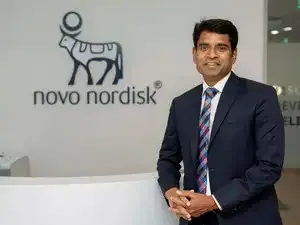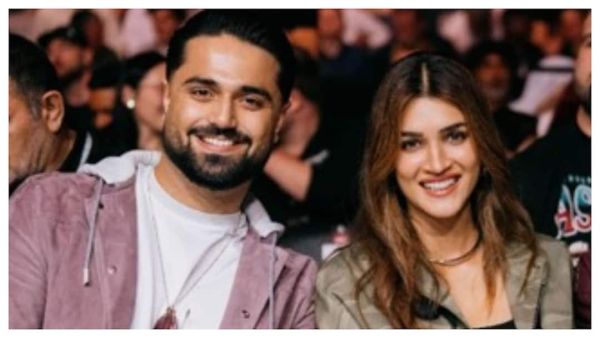Novo Nordisk’s strategy in India is shaped not by competitive pressures but by a long-term commitment to the country, Vikrant Shrotriya, the India head of the Danish drugmaker, told ET.
“We are not in a numbers game. What is more satisfying is when you see people benefiting from the medicine… And when we do this kind of work, the turnover comes automatically,” Shrotriya said in an exclusive interview with Economic Times.
He outlines the company’s pricing approach for a cost-sensitive Indian market, its upcoming Ozempic launch, and how it plans to navigate the GLP-1 landscape as the semaglutide patent expires next year. Edited excerpts:
You have just announced price cuts for Wegovy (semaglutide). What was the objective behind this, and what will be your pricing strategy in the months ahead?
Shrotriya: A 37% price cut in the pharmaceutical industry is not driven by anything else but a strategic move. This is a kind of sweet price for a medicine that is for obesity.
The price cut is part of our accessibility drive so that it reaches many more people across India. We did the same thing with our insulin 20 years ago. Our first strategy was to launch here and then understand the right price and access point for patients. It is a well-thought-out process spanning a few months. If you want to make an impact or bend the curve of obesity, what should the price point be?
I’m hugely buoyed by this price cut. It has taken quite a lot of courage to implement such a reduction, but I have done it with patients at heart. I hope it ensures that more people who need the drug can access it when prescribed.
With cheaper generics expected after semaglutide’s patent expires in March, how are you planning for the shift? Should we expect further price reductions, and what will be your overall strategy in a more competitive market?
Shrotriya: LOE (loss of exclusivity) is just a point in the life cycle of a brand. It’s an inflection point, and naturally, many more players will enter, and pricing will be one of the tools. Alongside that, trust, quality, reliability, consistency, awareness creation, and education will play a crucial role for us. What we did with insulin was the same: education, awareness, and empowering clinics so more patients understand the importance of tackling obesity.
As part of our overall strategy, we have also collaborated with Emcure, which has a strong footprint across India, enabling us to reach every corner of the country.
When are you likely to launch Ozempic in India?
Shrotriya: I can say it will be as soon as possible. The first batch should arrive within the next three months.
Will Ozempic be priced at the same level or lower than Wegovy?
Shrotriya: We are very watchful of the situation. We want to remain competitive and committed. We will assess accessibility and conduct new market research to determine whether the price point should be the same or different.
You have collaborated with Emcure. Are you looking at any more partnerships?
Shrotriya: This is a partnership specifically for obesity. We have a very robust pipeline. We are not only in obesity; we are also in diabetes, rare diseases, growth hormones, and some emerging areas. We are already partnered with Abbott and have a manufacturing partnership with Torrent.
How big is your field force?
Shrotriya: I can only say that we have the strongest and largest field force in diabetes in India.
“We are not in a numbers game. What is more satisfying is when you see people benefiting from the medicine… And when we do this kind of work, the turnover comes automatically,” Shrotriya said in an exclusive interview with Economic Times.
He outlines the company’s pricing approach for a cost-sensitive Indian market, its upcoming Ozempic launch, and how it plans to navigate the GLP-1 landscape as the semaglutide patent expires next year. Edited excerpts:
You have just announced price cuts for Wegovy (semaglutide). What was the objective behind this, and what will be your pricing strategy in the months ahead?
Shrotriya: A 37% price cut in the pharmaceutical industry is not driven by anything else but a strategic move. This is a kind of sweet price for a medicine that is for obesity.
The price cut is part of our accessibility drive so that it reaches many more people across India. We did the same thing with our insulin 20 years ago. Our first strategy was to launch here and then understand the right price and access point for patients. It is a well-thought-out process spanning a few months. If you want to make an impact or bend the curve of obesity, what should the price point be?
I’m hugely buoyed by this price cut. It has taken quite a lot of courage to implement such a reduction, but I have done it with patients at heart. I hope it ensures that more people who need the drug can access it when prescribed.
With cheaper generics expected after semaglutide’s patent expires in March, how are you planning for the shift? Should we expect further price reductions, and what will be your overall strategy in a more competitive market?
Shrotriya: LOE (loss of exclusivity) is just a point in the life cycle of a brand. It’s an inflection point, and naturally, many more players will enter, and pricing will be one of the tools. Alongside that, trust, quality, reliability, consistency, awareness creation, and education will play a crucial role for us. What we did with insulin was the same: education, awareness, and empowering clinics so more patients understand the importance of tackling obesity.
As part of our overall strategy, we have also collaborated with Emcure, which has a strong footprint across India, enabling us to reach every corner of the country.
When are you likely to launch Ozempic in India?
Shrotriya: I can say it will be as soon as possible. The first batch should arrive within the next three months.
Will Ozempic be priced at the same level or lower than Wegovy?
Shrotriya: We are very watchful of the situation. We want to remain competitive and committed. We will assess accessibility and conduct new market research to determine whether the price point should be the same or different.
You have collaborated with Emcure. Are you looking at any more partnerships?
Shrotriya: This is a partnership specifically for obesity. We have a very robust pipeline. We are not only in obesity; we are also in diabetes, rare diseases, growth hormones, and some emerging areas. We are already partnered with Abbott and have a manufacturing partnership with Torrent.
How big is your field force?
Shrotriya: I can only say that we have the strongest and largest field force in diabetes in India.





